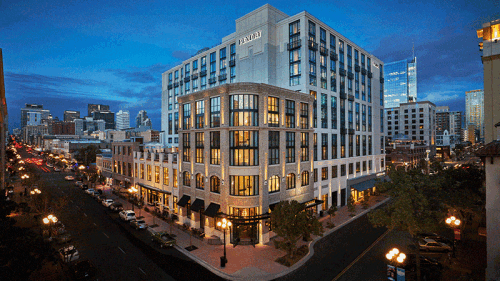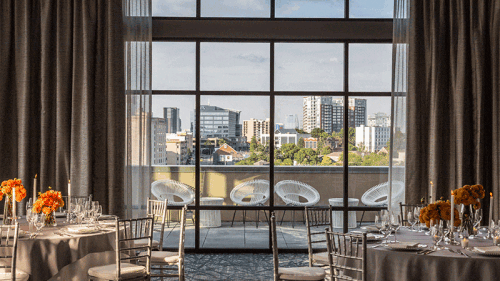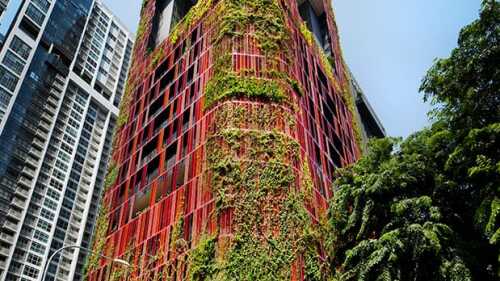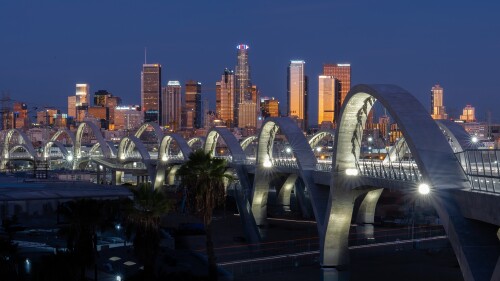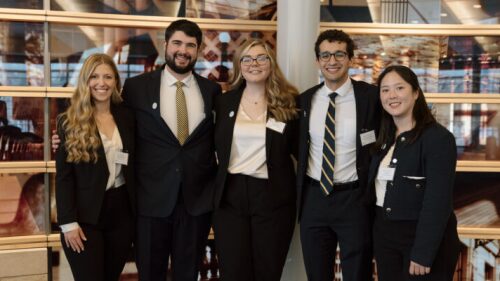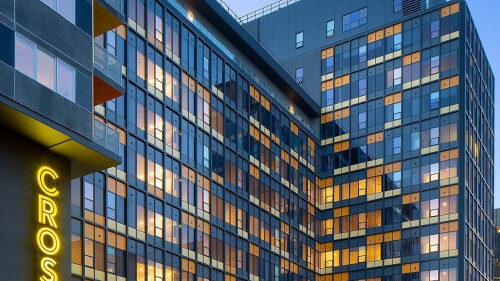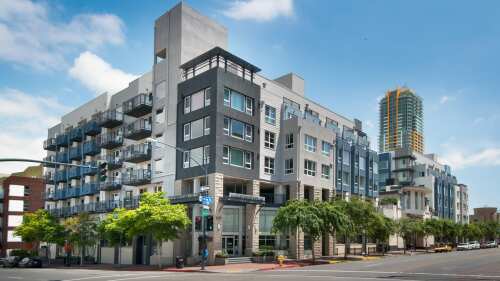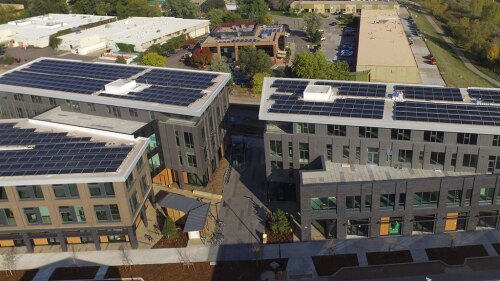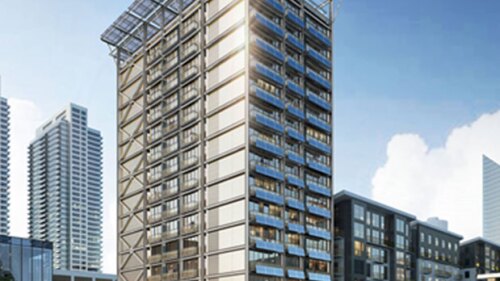Property Types
Hotels and Resorts
To meet the evolving expectations of today’s travelers, new hotels are being infused with active, social spaces that encourage interaction between guests, offer unique experiences with local flavor, and provide healthy lifestyle amenities, said experts speaking at a ULI San Diego/Tijuana event.
Imagine arriving home after a long day at the office and calling room service to have a chef-prepared meal delivered to your door. For residents of Nashville’s new, innovatively designed Aertson Midtown building, that is not wishful thinking. They simply place an order with the signature restaurant of the Kimpton hotel that shares their apartment building.
Set against an urban landscape of concrete, steel, and glass in Tanjong Pagar, Singapore’s central business district, Oasia Hotel Downtown (OHD) stands out with its red silhouette clad in lush greenery. An integrated hotel/office development comprising a 27-story, 314-room business hotel and 100 new-age offices, OHD responds to the government’s vision for the precinct earmarked as the island’s next waterfront city with a mix of business, commercial, and residential activities.
Industrial
Driven by an e-commerce boom, industrial real estate is in the midst of a golden age that shows no signs of waning, despite lingering concerns about the long-term health of traditional retailers, a group of industrial property managers said during a panel discussion at the 2017 Fall Meeting in Los Angeles.
The latest ULI Real Estate Economic Forecastis predicting more positive momentum ahead for both the economy and the commercial real estate industry through 2019. That being said, the pace of growth is slowing and the survey of 48 economists and analysts clearly reveals some lowering of expectations.
A year after the opening of the Panama Canal expansion, rents for industrial space around the Port of Los Angeles are at an all-time high and vacancy rates are hovering around 1 percent.
Mixed-Use
As cities confront the housing crisis, they face intersecting challenges: opposition not only to affordable-housing development but often to any development; spiraling financing and construction costs; outdated zoning that stifles or misplaces growth; egregious bureaucratic barriers; and issues around displacement and historic preservation. But some cities have an asset that can serve as a testing ground for harmonizing urgent priorities: their downtown districts.
A redevelopment plan for a Seattle site presented by a team of Georgia Institute of Technology students has taken top honors in the 22nd annual ULI/Gerald D. Hines Student Urban Design Competition. The competition was created with a generous endowment from long-time ULI leader Gerald D. Hines, founder of the Hines real estate organization.
A team from ESSEC Business School in France has been named the winner in this year’s prestigious ULI Hines Student Competition – Europe. The results were announced by ULI and Hines, the global real estate investor, developer, and property manager, following the final of the fifth annual pan-European competition for integrated and multidisciplinary urban regeneration.
Multifamily
Local governments are rolling out new and updated programs—including tax incentives and zoning amendments—to encourage developers to convert vacant office buildings to some other use.
Every commercial real estate cycle presents a unique opportunity to drive innovation and refine investment strategy. That’s among the takeaways from Urban Land’s interview with industry vet Jim Brooks, president of Los Angeles–based BH Properties. Brooks brings deep experience in navigating cycles and unlocking value, with a resume that includes The Koll Company, Morgan Stanley, Tishman Speyer, and Columbia’s real estate Master’s degree program.
Existing properties get makeovers to provide sustainable options for vulnerable populations
Office
Surge: Coastal Resilience and Real Estate, a ULI research report, documents the challenges associated with coastal hazards such as sea level rise, coastal storms, flooding, erosion, and subsidence, and provides best practices for real estate and land use professionals, as well as public officials, to address them.
This year’s Net Zero Buildings Week is Sept. 16-20. The virtual event series supports partnerships and collaboration across the built environment industry to collectively advance net zero buildings.
Northern Mexico has experienced a significant expansion in the Mexican industrial real estate sector since its major decline from the late 1990s to the early 2000s, due, in part, to low-cost production in China. During the pandemic, that trend began to shift.
Residental
ULI’s Terwilliger Center for Housing is increasing its focus on work done at the district council level, Christopher Ptomey, the center’s executive director, said in introducing a panel Wednesday at the 2022 ULI Spring Meeting in San Diego. The panel, titled “Attainable Housing for All: Replicable Best Practices from Local Housing Challenges,” presented work at the district council level in Phoenix, Philadelphia, and Washington, D.C.
During the 2022 ULI Housing Opportunity Conference, a panel discussion on “Getting Residential to Net Zero” began with real estate professionals sharing profiles of net zero projects, followed by a passionate discussion on the urgency to get real estate to net zero.
ULI MEMBER–ONLY CONTENT:In the past year, while investors have been eager to pour capital into the burgeoning build-to-rent (BRT) single-family residence market, in many cases they are finding plenty of roadblocks to profit, said panelists at the 2021 ULI Fall Meeting. Development sites are harder to find, the price of new construction has soared, and builders are finding they can make more money selling homes to buyers.
Retail
At the 2019 ULI U.K. National Conference, a panel on the practicalities of real estate investment reflected on the opportunities and challenges, not least in terms of the impact that Brexit is having on investor sentiment, as well as where we are in the market cycle. Multifamily continues to do well, while retail is struggling as in overbuilt markets.
The growing popularity of online grocery shopping could result in demand for up to 35 million square feet (3.25 million sq m) of U.S. cold-storage space shifting from retail stores to warehouses and distribution centers within the next seven years, according to a report from CBRE.
At the 2018 ULI Europe Conference in Berlin, a number of discussions on the future of the retail business looked at the changing shopping center ecosystems and what developers could be doing better.

